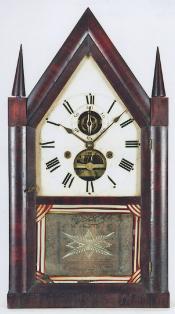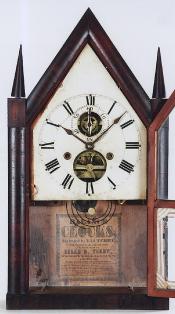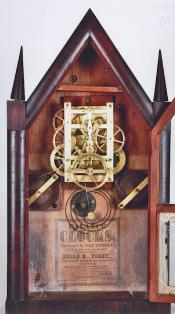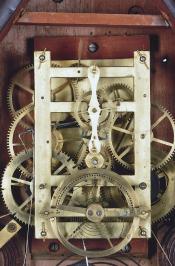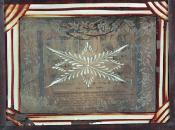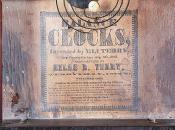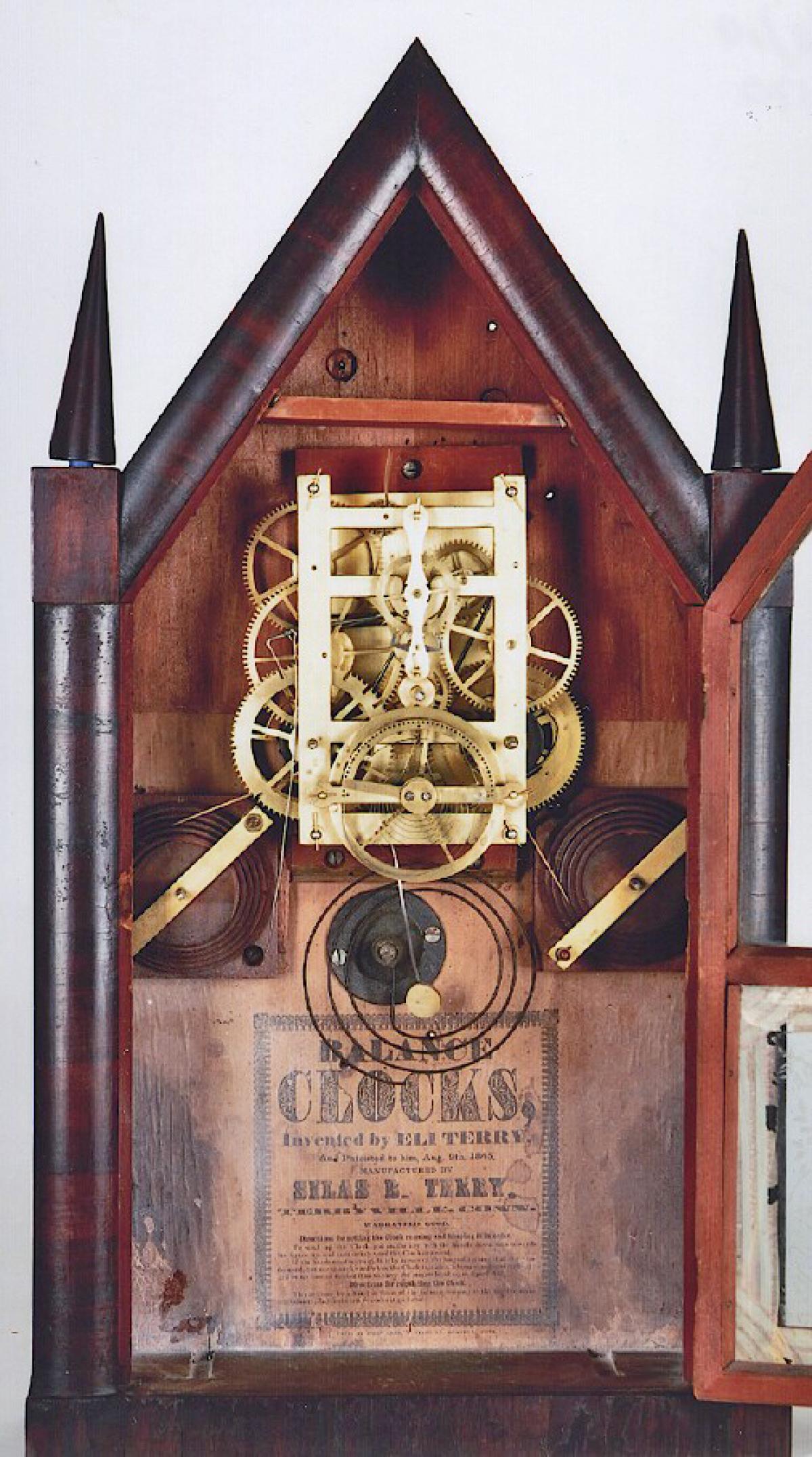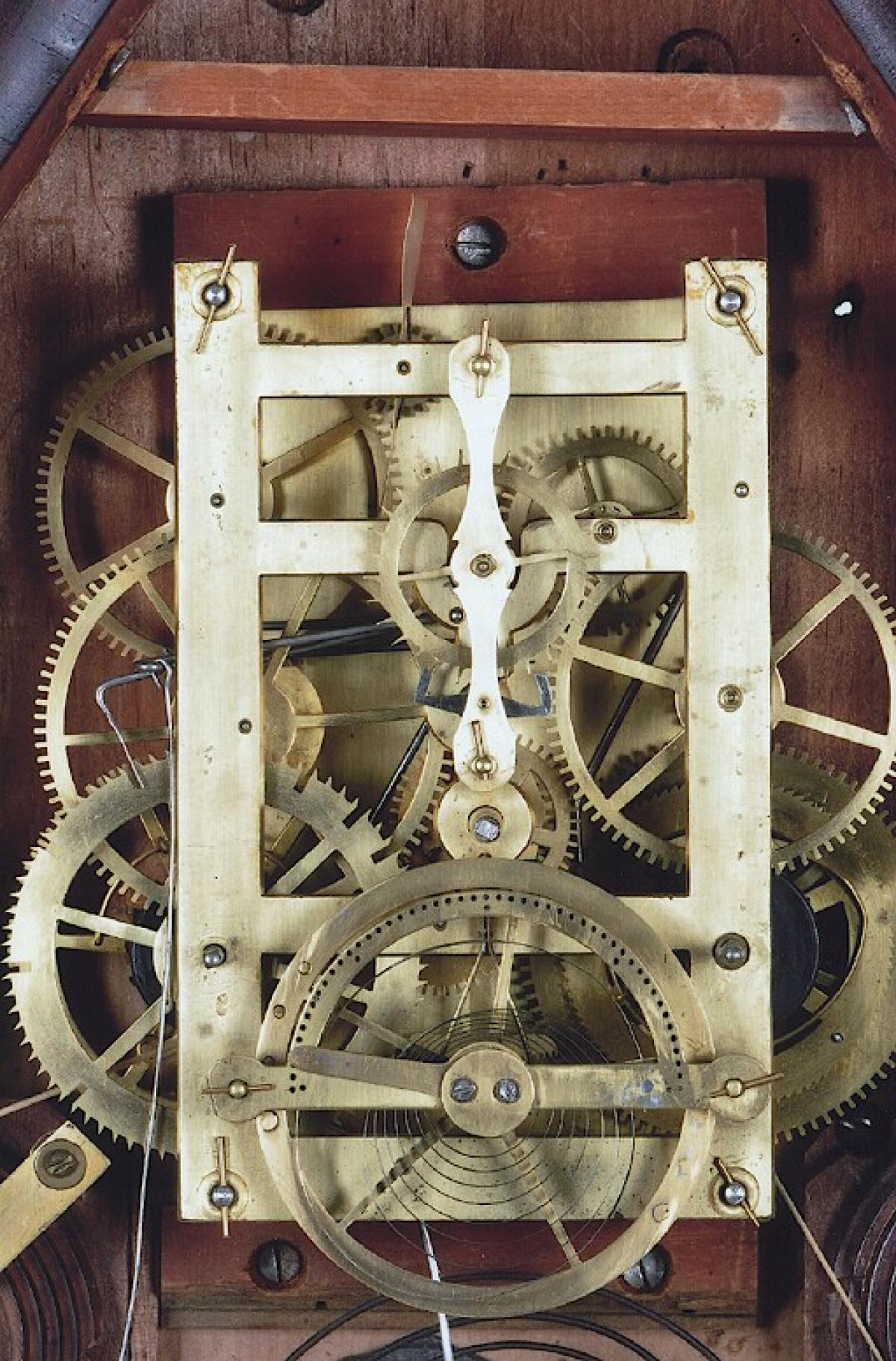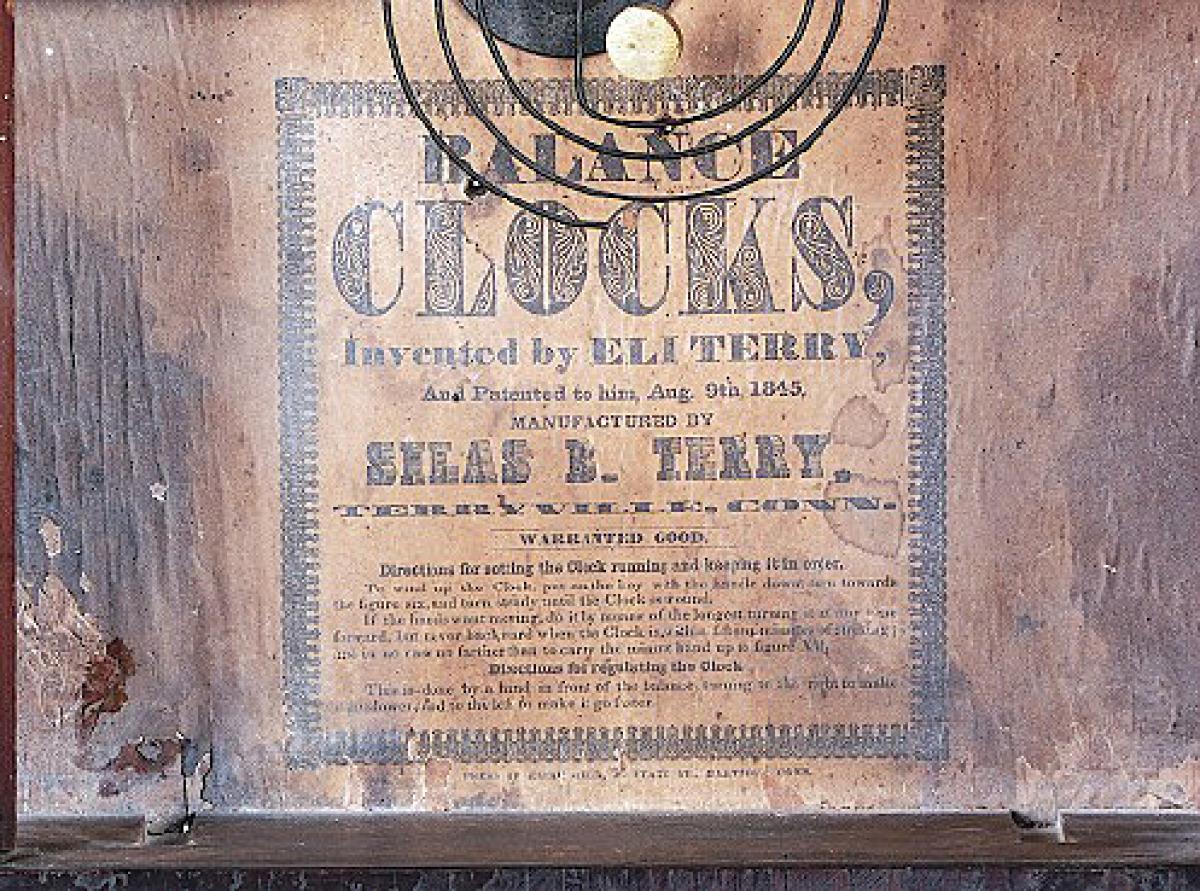Silas B. TerryFusee with a balance wheel escapement. Sharp Gothic or Steeple Clock. TT-160.
This shelf clock form was initially called a "Sharp Gothic" and is popularly called a "Steeple" clock today. It was made by Silas Burnham Terry of Terryville, Connecticut, sometime around 1845. The case is veneered in rosewood, and white pine is used as a secondary wood. The finish appears to be original. The case is oversized, measuring an impressive 24.5 inches tall, 13.5 inches wide, and 4.25 inches deep. Positioned next to the standard-size steeple case form, which measures in the neighborhood of 20 inches in height, this clock stands out.
The front of the case is fitted with a door divided into two sections. The lower section retains its original reverse-painted tablet that William Fenn painted. It is in excellent original condition. The upper section is fitted with clear glass. Through this glass panel, one can view the painted wooden dial. Open the door, and one gains access to the case's interior. The Clockmaker's label is pasted onto the backboard and is in excellent original condition. This paper label reads, "BALANCE / CLOCKS, Invented by ELI TERRY, / And Patented to him, Aug. 9th, 1845, / MANUFACTURED BY / SILAS B. TERRY, / TERRYVILLE, CONN."
The movement is constructed in brass and features a few unusual design elements that are not commonly associated with the standard steeple form. The brass and steel movement features a skeletonized front plate. The backplate is solid. The gearing is lightly designed and features wheels with six thin spokes. The main wheel drums are cherry. The coil drive springs are fully enclosed and are mounted separately in cherry blocks underneath the movement. Connected to them are the fusee barrels, designed to equalize the power of the springs over the run. A large balance wheel regulates the clock works. This five-spoked wheel oscillates via a balance spring. Due to its large size, it exhibits a mesmerizing motion that can be seen through a hole cut in the dial. A second hand, positioned above the balance wheel, ticks off the seconds. The strike train is actuated via a count-wheel striking system. It strikes each hour on a wire gong mounted to the backboard inside the case.
Dimensions: 24.5 inches tall, 13.5 inches wide, and 4.25 inches deep.
Inventory number TT-170.
Silas B. Terry was born on February 1, 1807 (during Eli's involvement with the porter contract) and died of a heart attack on May 20, 1876. He was the youngest of eight children born to Eli & Eunice (Warner) Terry. Silas worked in various clockmaking enterprises. Unlike his father, he focused on the more expensive brass-geared clocks and was in the process of producing them as early as December of 1833. He was an inventive person and was constantly testing new designs. One of the most notable was the application of the balance wheel to clock movements. Silas was granted a patent for this on August 9, 1845. Silas was involved with several clockmaking firms, which included the S. B. Terry & Company (1852-1853) and Terryville MFG., Co. (1853-1854). In 1854, Terry went bankrupt and took a job as a general manager of the William L. Gilbert & Company of Winsted, Connecticut. In 1861, he took a job as superintendent of the Waterbury Clock Company. In 1867, he formed the Terry Clock Company in Waterbury with his sons. Silas' early clocks were well made and often had interesting movements. The evidence of his work supports the suggestion that he loved to tinker.

